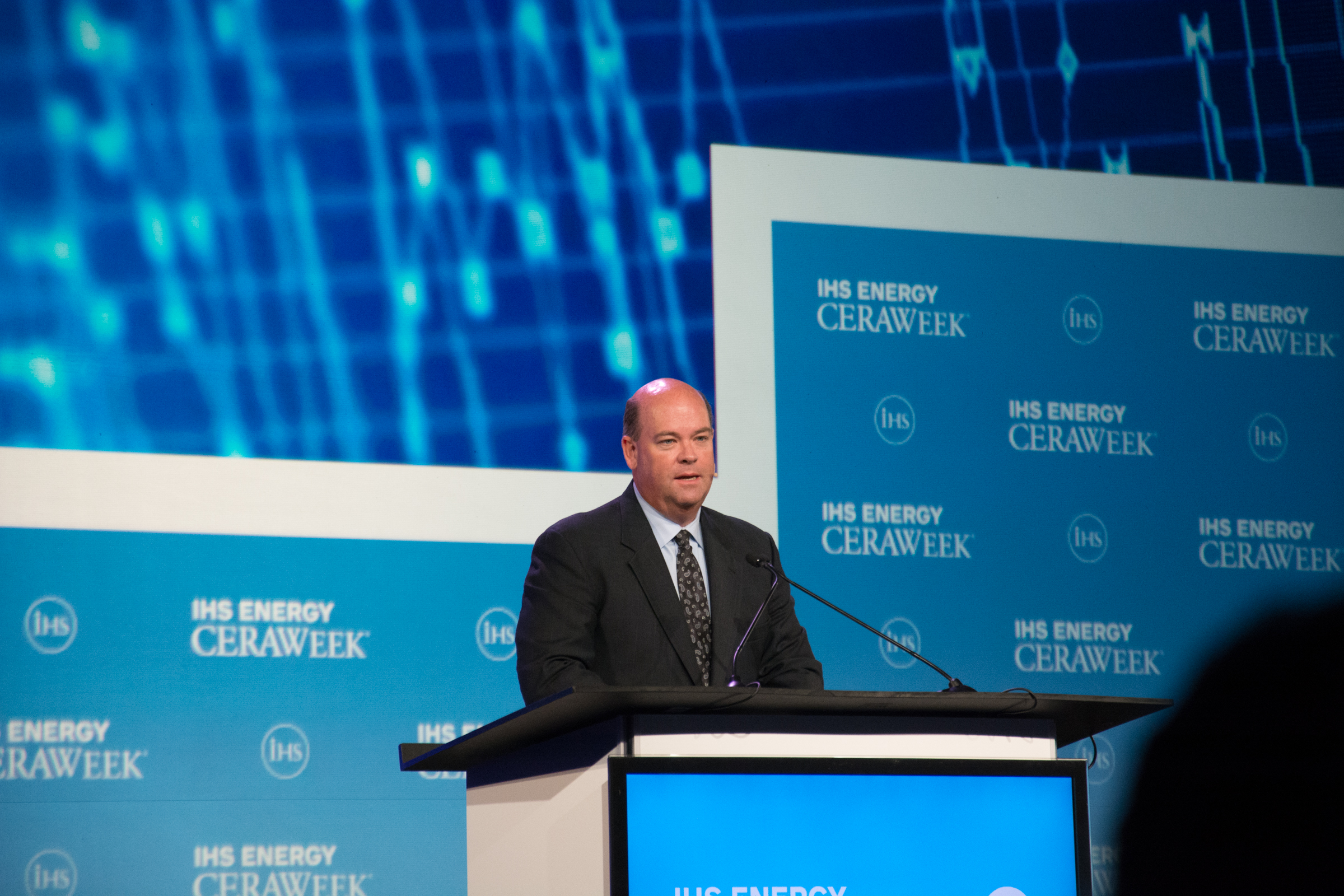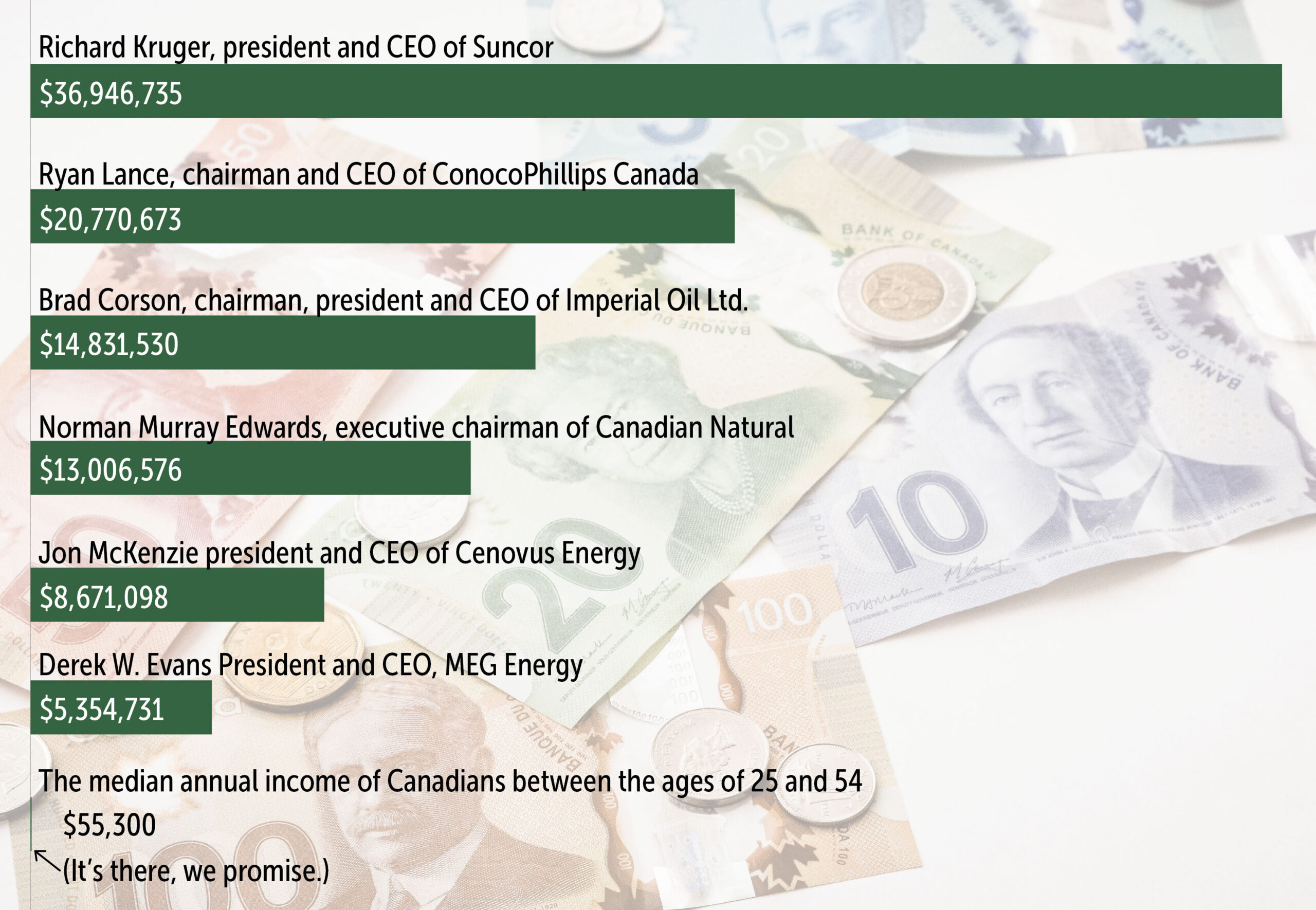
‘Afraid of the water’? Life in a city that dumps billions of litres of raw sewage into lakes and rivers
10 billion litres of sewage are dumped into Winnipeg’s lakes and rivers each year. Some...
Get the inside scoop on The Narwhal’s environment and climate reporting by signing up for our free newsletter.
If you receive a typical salary, the top executives in Canada’s oilsands have already been paid more money than you will make for the entire year.
The Narwhal looked at the compensation received by the highest-ranking executives last year at the top six oilsands producers, a group called the Pathways Alliance.
Those companies include Canadian Natural Resources Limited, Suncor, Cenovus, ConocoPhillips Canada, MEG Energy and Imperial Oil. Three days into 2025, their top-paid executives will have made the median Canadian salary — and then some.
That’s about $20,595.12 per day.
Meanwhile, the ‘median’ Canadian was compensated $213 per day last year. The median salary, drawn from Stats Canada data, represents the midpoint of Canadian salaries. That means half of Canadians made more than this figure, and half made less.
If each dollar was a kilometre, a median-earning Canadian could get from Ottawa to Montreal, while Evans could travel halfway around the Earth each day.

Three days into 2025, Evans has likely been compensated $61,785 — higher than the median annual income of Canadians between the ages of 25 and 54, which is $55,300. (For the purposes of this analysis, we excluded the youngest and oldest Canadians, who have lower salaries.)
That means he netted the typical yearly salary in one day.
If every dollar meant you got a second of vacation, the average Canadian would get a little less than two days off, while Corson would get more than 24 weeks.
That works out to $141,103 per working day — or $17,763 per hour, if you assume a regular eight-hour workday. A Canadian (of any age) working full-time was paid a median wage of roughly $1,400 per week last year.
At his rate, Kruger could have been compensated a typical Canadian’s salary by lunch time on New Year’s Day.
Often these executives’ salaries are a small chunk of their final compensation, which is driven by cash and stock incentives. Though compensation fluctuates, overall executives are making more year over year.
If every dollar equalled one square kilometre, the average Canadian would have a land base about the size of Lake Michigan, while Lance would have a land base as big as Canada and the United States put together.

Fines that these companies pay for significant environmental damage are also notably lower than the annual compensation packages of top executives.
Suncor had $9 billion in 2023 earnings and has polluted the Athabasca River repeatedly, but fines have never exceeded $1 million, PhD student Ben R. Collison reported for The Conversation.
Imperial Oil faced a $1.1-million fine this year for a 2021 oil spill in Sarnia, Ont., which included a $225,000 victim surcharge for causing illness to people living nearby. Meanwhile, its top three executives were paid $3.2 million, $5.8 million and $14.8 million, and its profits for 2023 were $4.9 billion.

And despite ballooning profits and sky-high executive compensation, Pathways Alliance is seeking taxpayer money to support its endeavours. The alliance plans to build a large carbon capture and storage network to capture emissions from oilsands facilities and send them down a pipeline to an underground storage area. The group has campaigned for extensive government financial and regulatory support to achieve the $16-billion carbon capture plan, including public subsidies worth up to 50 per cent of their operating costs.

To make these estimates, The Narwhal assumed annual salaries included paid statutory holidays and vacation, and used an eight-hour day to calculate rates. We did not incorporate overtime, taxes and other variables. The Narwhal chose to measure Canadians’ income between 25 and 54 in our central comparison because teens, young workers and people approaching retirement are often being paid less.
These numbers are based on 2023 compensation for executives and 2022 salary data from Statistics Canada, the most recent years available.
The Narwhal focused on the oil and gas industry since we cover resource extraction and the natural world, but some of the other top-paid executives in Canada work in industries like telecommunications, transportation and more. A 2023 report by the Canadian Centre for Policy Alternatives found Canada’s highest-earning chief executive officers received larger pay increases in the previous year compared to regular Canadians, with an average salary increase of 4.4 per cent — equivalent to $623,000.
Income equality in Canada has literally never been higher. The income gap between the richest and poorest Canadians is the widest it has been since Statistics Canada started collecting data in 1999.

— With files from Carl Meyer
Get the inside scoop on The Narwhal’s environment and climate reporting by signing up for our free newsletter. On a warm September evening nearly 15...
Continue reading
10 billion litres of sewage are dumped into Winnipeg’s lakes and rivers each year. Some...

Court sides with Xatśūll First Nation, temporarily halting Mount Polley mine waste expansion

Break out the champagne: Emma’s storied life and leadership in journalism has earned her the...
